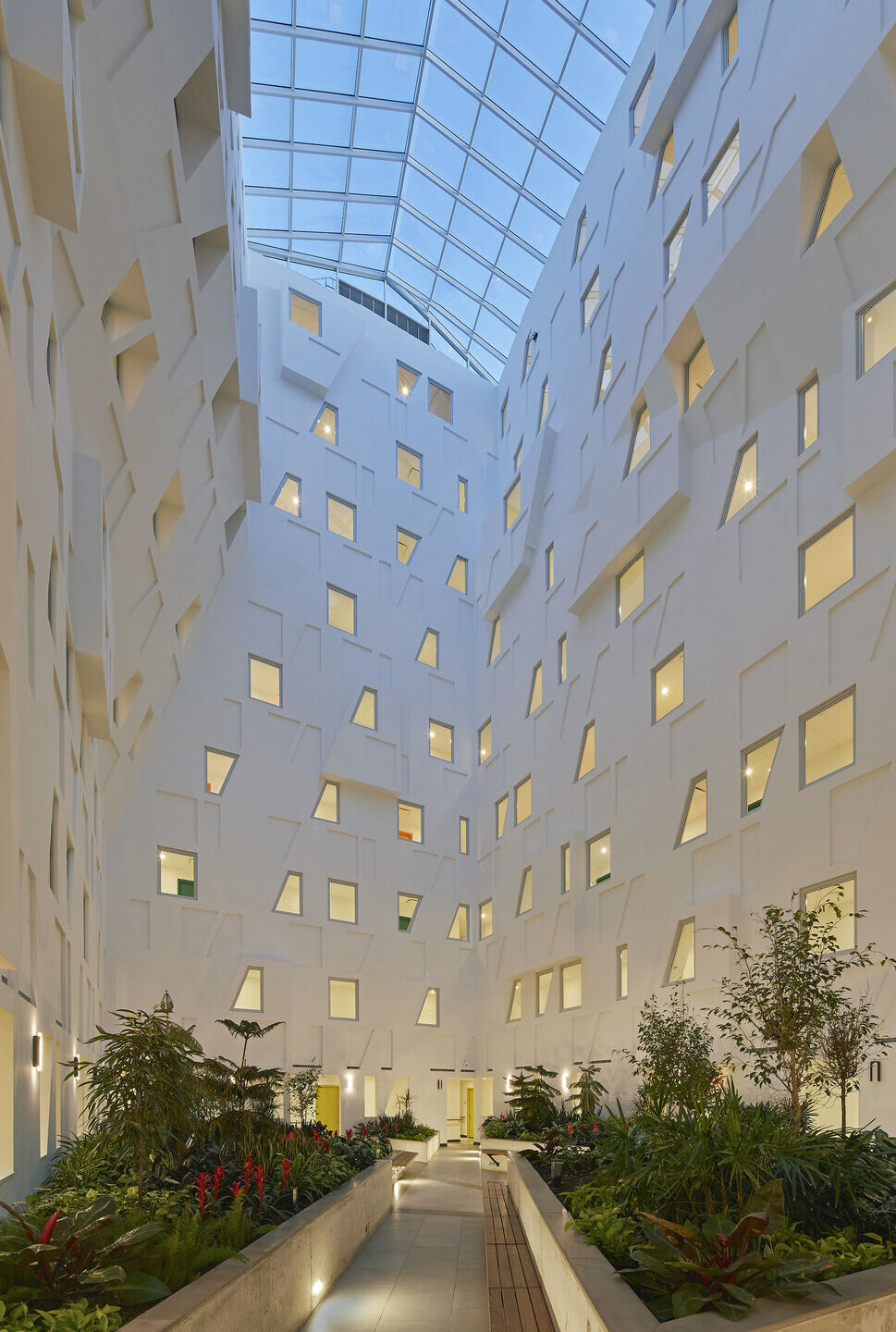Studio Libeskind opens The Atrium at Sumner in Bedford Stuyvesant, Brooklyn, on NYCHA’s Sumner Houses Campus. The $132 million building is a partnership with the New York City Housing Authority (NYCHA), the NYC Department of Housing Preservation and Development (HPD), the NYC Housing Development Corporation (HDC), Selfhelp Community Services, RiseBoro, and Urban Builders Collaborative/Lettire Construction Corp.
The 11-story senior building was constructed on underutilized land on NYCHA’s Sumner Houses campus. The new building features 190 apartments, with 132 available to senior households earning below or equivalent to 50 percent of Area Median Income (AMI), 57 units reserved for seniors who had formerly experienced homelessness, and an apartment designated for a live-in superintendent. NYCHA residents will be given preference for 33 of the apartments.


“It is a truly remarkable feeling to have come together to create nearly 200 new affordable housing units on NYCHA property for New Yorkers in need,” said NYCHA Chief Executive Officer Lisa Bova-Hiatt. “This new, beautiful building will be home to a thriving senior community and provide a new quality of life to formerly unhoused members of the community. We are deeply appreciative of our partners in this 2 endeavor to provide the Atrium at Sumner’s residents with the comprehensive care and exceptional level of comfort that they deserve in their golden years.”
“Growing up in social housing in the Bronx gave me a unique perspective on the importance of community and high-quality, affordable housing. I took this insight to task when designing the Atrium at Sumner Houses; I wanted to create a place that felt like home to the residents,” said Principal Design Architect Daniel Libeskind, Studio Libeskind. “I hope this project serves as a powerful example of how good design can positively impact society, especially for those in need,” added Libeskind.


Located in the park-like setting of the existing Sumner Houses campus on Marcus Garvey Boulevard between Park Avenue and Myrtle Avenue, the building will feature 132,418 square feet of affordable senior housing, coupled with a ground-level community facility of 8,309 square feet.
The design features a dynamic, yet rational geometric form interrupted by a pattern of open and solid elements. The design team aimed to interact actively with the street and the surrounding context. Bold diagonal lines wrap the building at angles that rise from the ground, creating a folding form that breaks down street-level massing. A glazed entrance lobby creates a transparent and open connection to the street. The residential facility is a courtyard building with corridors looking inward toward a central green public space on the second floor.


The studio and one-bedroom units feature a variety of open, spacious layouts with large windows throughout. The building is designed to accommodate the Age-In-Place philosophy. 100% of units are adaptable, with 19 (10%) apartments fully adapted to accommodate tenants with physical disabilities and 4 (2%) apartments fully adapted for visually or hearing-impaired residents.
All aspects of this development are dedicated to bolstering seniors’ quality of life. The building’s amenities include a 24-hour attended lobby, free broadband in common areas and apartments, on-site building manager, an apartment designated for a live-in superintendent, laundry on the second and nineth floors, a multi-purpose community room, a library/computer room, bicycle storage room, exercise room, emergency pull cords and built-in air conditioners in each apartment, and handrails in common areas. The building also offers onsite social services through Selfhelp’s Active Services for Aging Model (SHASAM) with voluntary social work support for each resident and a Program of All-Inclusive Care for the Elderly (PACE Center) on the ground floor, which tenants of the building will have the ability to join voluntarily. 3 The building also incorporates Passive House Standards. It has significant green and energy-efficient features, which align with Enterprise Green Communities, Energy Star Multifamily High Rise, and NYSERDA Programs. This results in 60 to 70 percent less energy consumption than the average New York City apartment building. The highly sustainable design features high-performance envelope materials and systems and energy-efficiency HVAC and ERV systems.
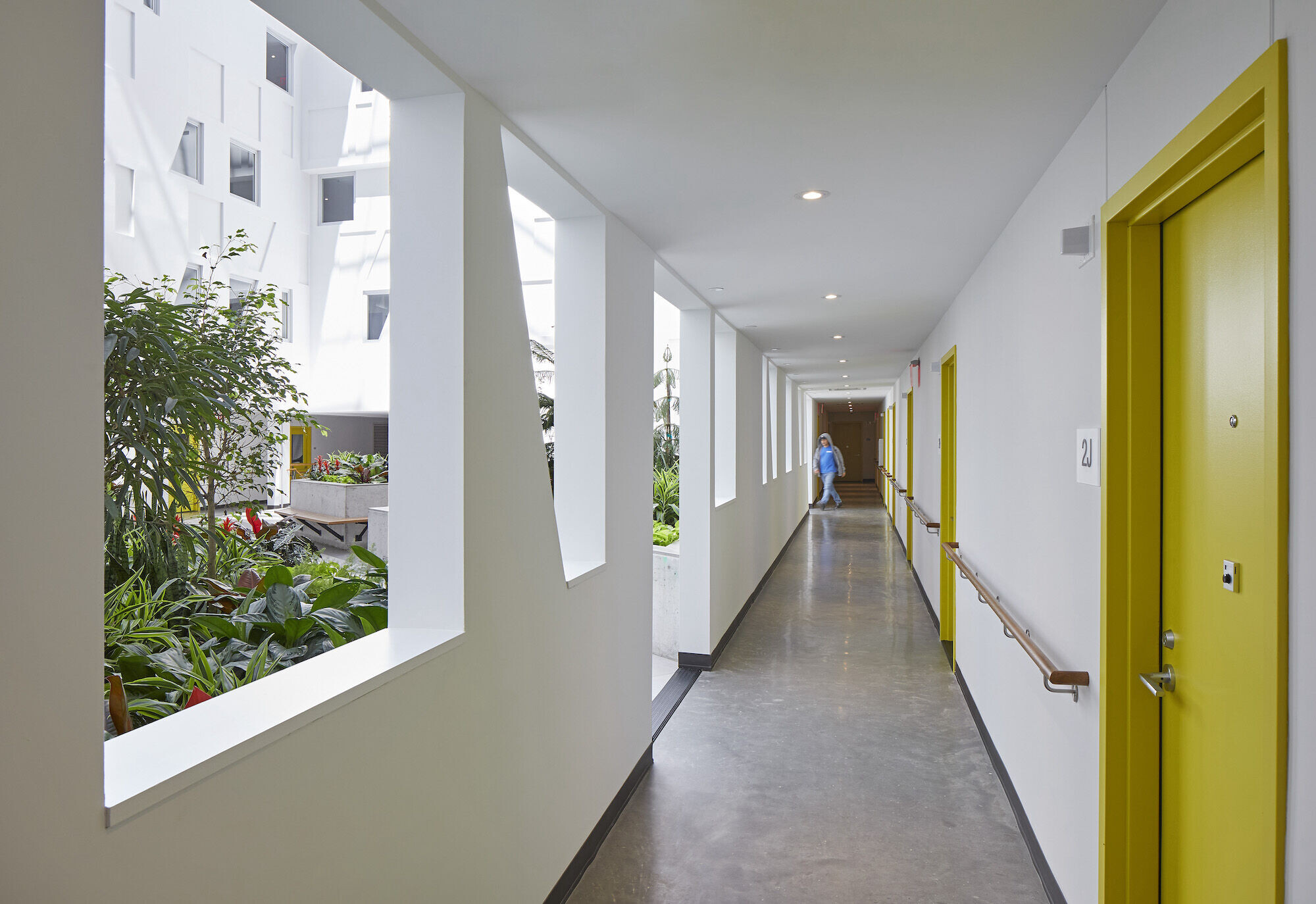

The design also features full electrical appliances and HVAC systems in the apartments & amenity rooms, prioritizing clean energy and reduced carbon emissions. In addition, the building features an emergency power generator serving life safety systems, emergency lighting, and outlets, allowing residents to utilize the community room as a resilient hub.
Active design elements, such as stairwell windows and hallway organization, encourage residents to use stairs rather than elevators. The new building features a community garden for residents and outdoor seating adjacent to the building's entrances. The Sumner Houses campus' open space next to the new building also received new landscaping, walking paths, lighting, seating, and bioswales providing protection from extreme storms.
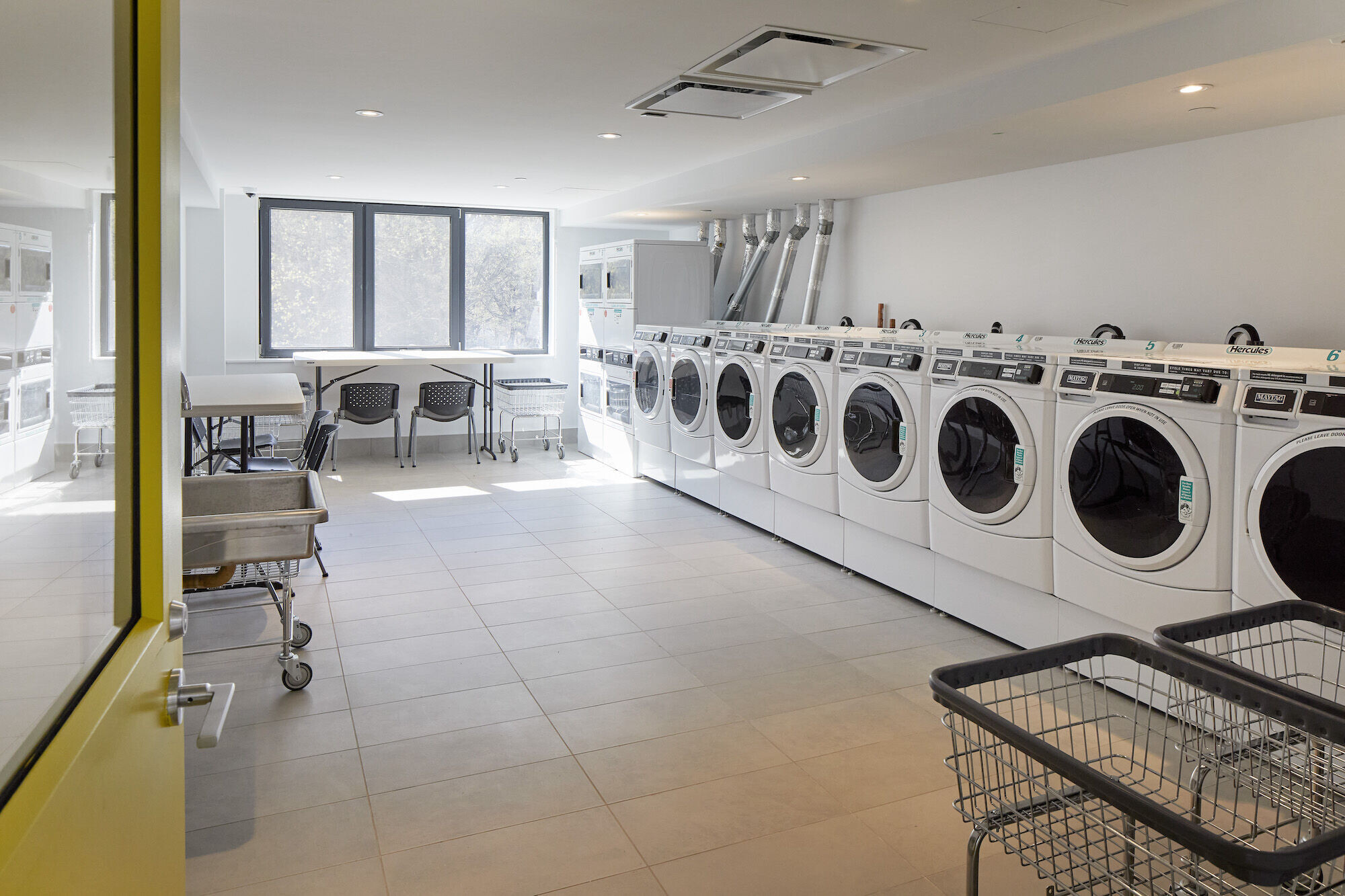
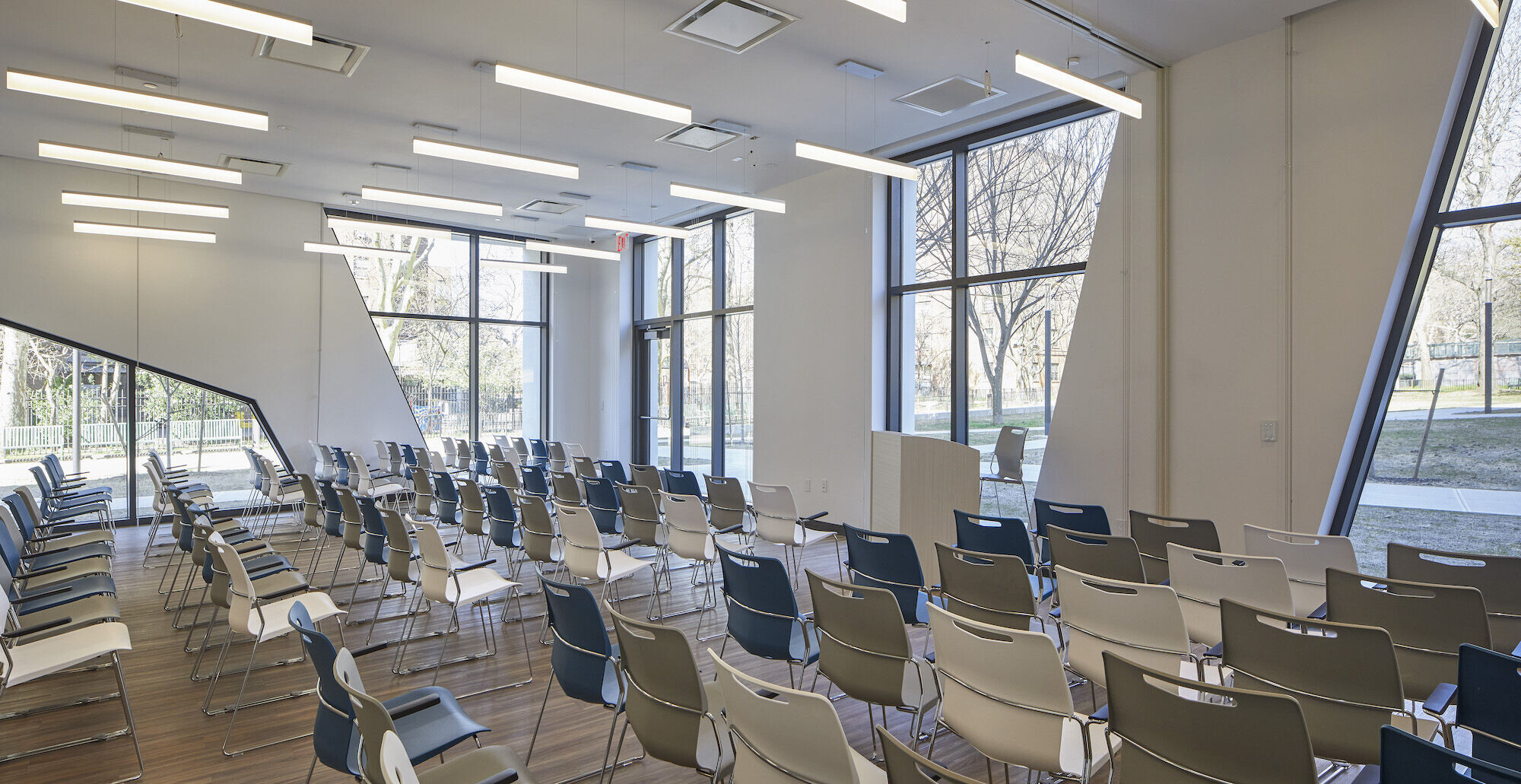
Permanent financing for the $132 million project at the Atrium at Sumner includes $41 million in HDC bonds, a $12 million subsidy from HDC's Extremely Low & Low-Income Affordability (ELLA) and HPD's Senior Affordable Rental Apartments (SARA) programs; roughly $63 million in Low Income Housing Tax Credit (LIHTC) equity; $3.5 million in Reso A funds from Mayor Eric Adams as Brooklyn Borough President, former City Council Members Corey Johnson, and Robert Cornegy, and the City Council's Black & Asian Caucus; $2.2 million from the Dormitory Authority of the State of New York; $300,000 from the New York State Energy Research and Development Authority (NYSERDA) and $10 million from other sources.
The project began design in 2017, construction began in 2021, and residents began to move in April 2024.

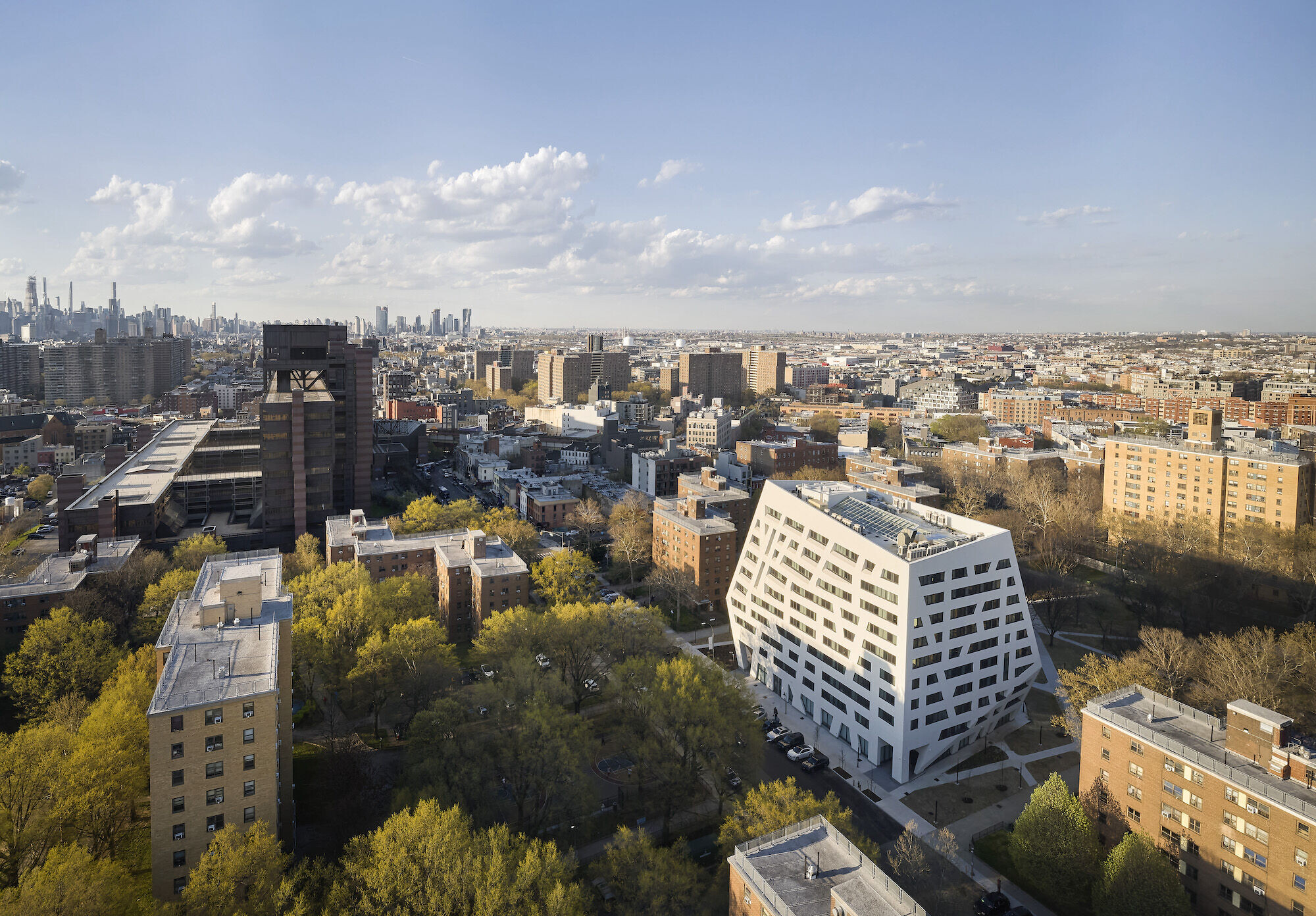
Team:
Owner: Sumner Senior Partners, LLC
Architects: Studio Libeskind
Development Team: Urban Builders Collaborative
RiseBoro Community Partnership
Selfhelp Community Services
New York City Housing Authority (NYCHA)
New York City Department of Housing Preservation and Development (HPD)
New York City Housing Development Corporation (HDC)
Construction Manager/ GC: Lettire Construction Corp.
Civil Engineer: AKRF, Inc.
Structural Engineer: LERA Consulting Structural Engineers
MEP/FP Engineer: FISKAA Engineering
Fire Alarm Consultant: Nazar Engineering P.C.
Building Enclosure Consultant: Steven Winter Associates, Inc.
Buildings Consultant: Bright Power
Photographer: Hufton+Crow


Materials Used:
Primary structure: Cast-in-place concrete
Façade: EIFS
Floors: Polished concrete in lobby & hallways, Luxury vinyl planks in apartments & offices
Interior Walls: Painted gypsum boards
Ceiling: Painted gypsum boards
Main stair: Precast concrete treads on steel framing, stained oak handrails.
Exterior Windows: Glazed PVC window system
Interior Windows: Glazed aluminum window system
Storefront: Glazed aluminum curtain wall system
Skylight: Glazed aluminum structural skylight system
